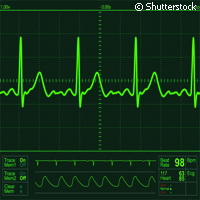New advances in stem cell treatment for heart damage
Using bone marrow stem cells has already led to huge advances in treating heart attacks and cardiomyopathy. But a new approach, research into which has been partially funded under the Seventh Framework Programme (FP7), is looking even more promising. With diseases of the heart and circulatory system now the largest single cause of death in the EU, accounting for about two million deaths annually, the race is on to find new and effective treatments. Heart disease is also responsible for the largest number of premature deaths before the age of 75. Clinical trials worldwide have tested to what extent bone marrow stem cells are successful in treating heart attack and cardiomyopathy symptoms. While the trials have shown the approach to be safe, improvements in how well the heart pumps blood around the body have been limited. Scientists now have their sights set on using stem cells from the patient's heart itself. Heart stem cells can give rise to beating heart cells, and Professor Michael Schneider and his team at Imperial College London in the UK are now working on techniques to identify and then purify such cells for transplant. The team has already discovered a way in which to identify the relevant cells in mice, and although the identifying markers are quite different in human cells, they have been able to transfer the method from mice to humans. The findings were presented at the annual National Stem Cell Network science conference in the UK on 13 July. 'We've developed a method to identify cells that have three important characteristics,' says Professor Schneider. 'They are definitely stem cells; they have the right molecular machinery turned on in order to become heart muscle or blood vessel; and they don't yet have any of the full characteristics of heart muscle or blood vessel cells such as producing cardiac myosin - an important protein in heart muscle cells.' The next step is to further develop the technique so that it can be used for the whole chain of events needed to repair damage: extraction, purification and multiplication in the clinic. The team is using advanced robotics and automated microscopy to identify the most effective methods for growing the cells and turning them into heart muscle. EU support for the research comes from the CARDIOCELL ('Development of cardiomyocyte replacement strategy for the clinic') project, funded under the Health Theme of FP7, as well as the European Research Council (ERC). The British Heart Foundation, the Leducq Foundation and the UK's Medical Research Council have also contributed.
Countries
United Kingdom



